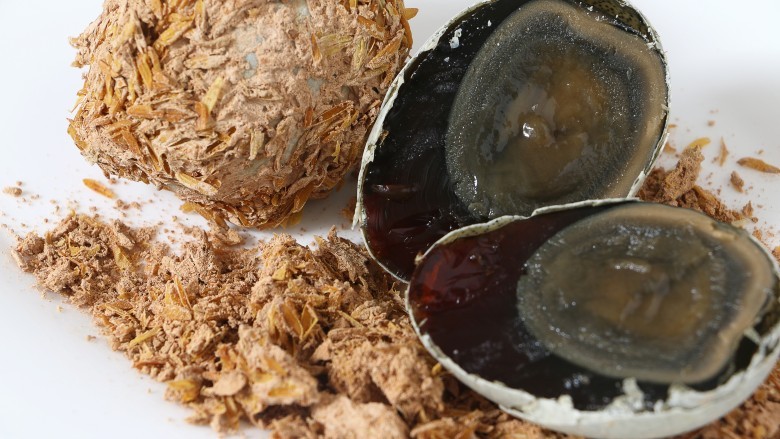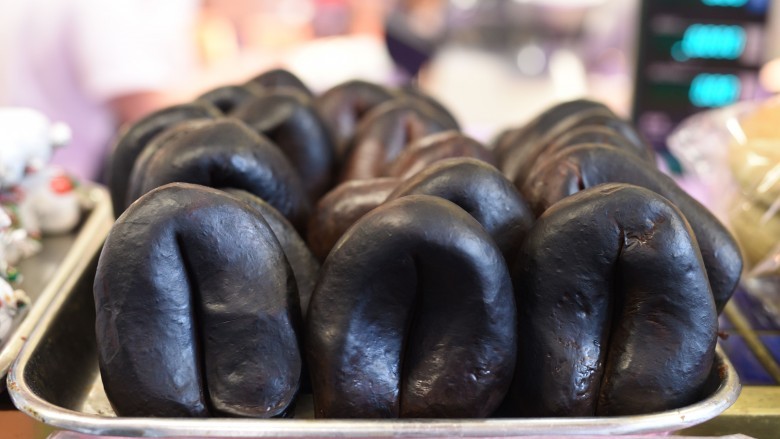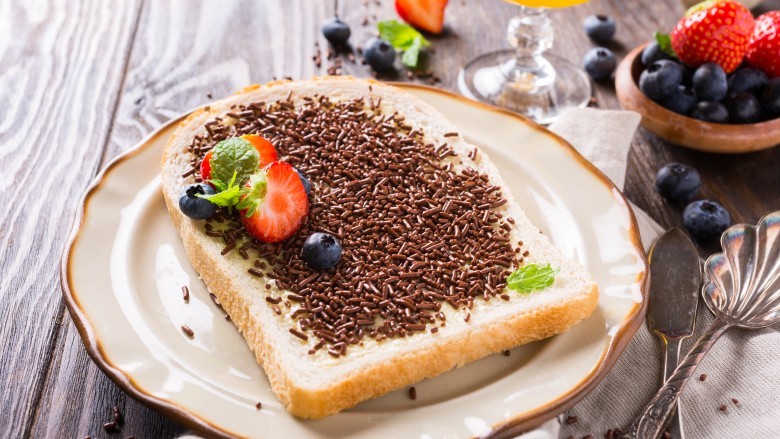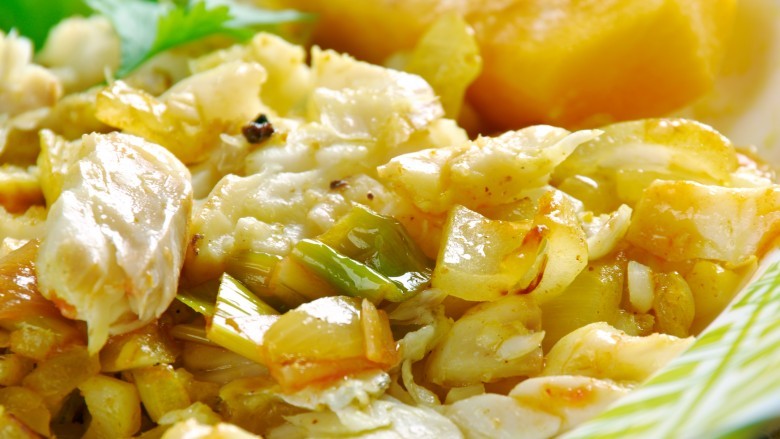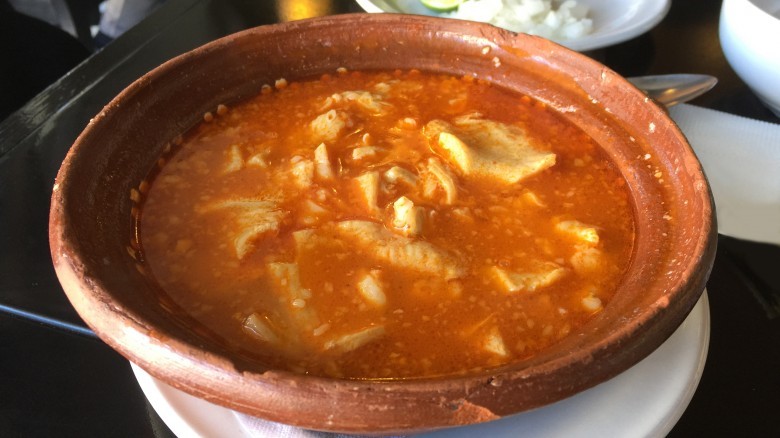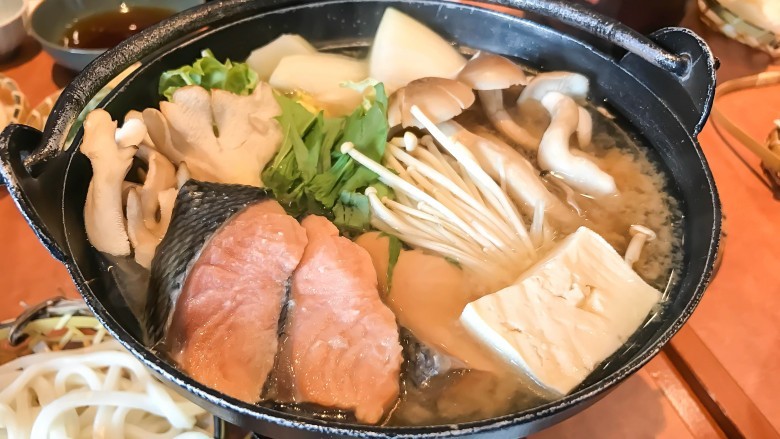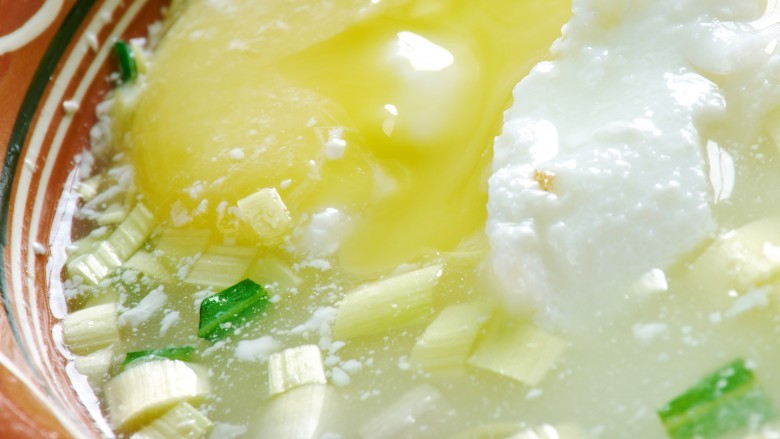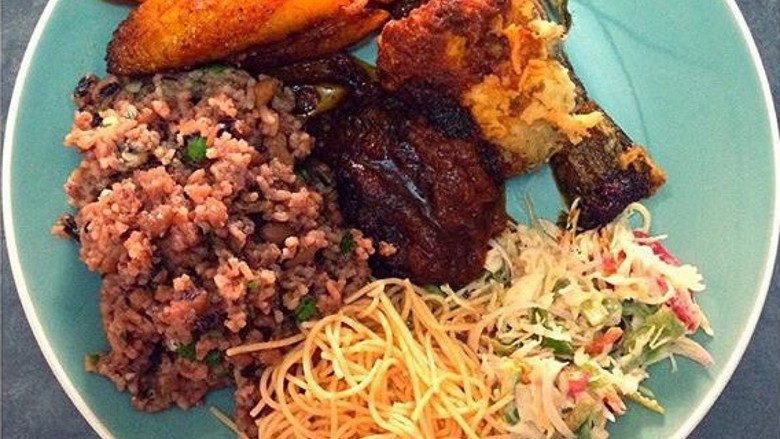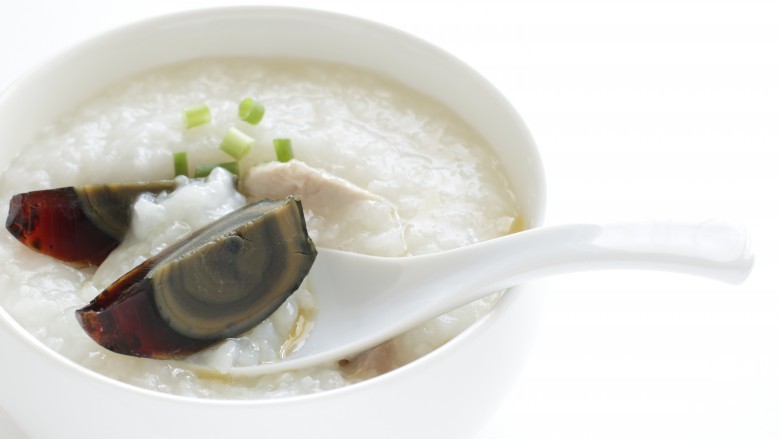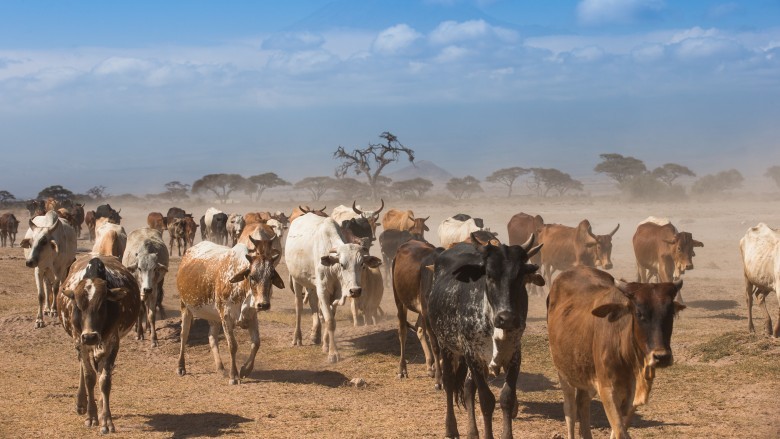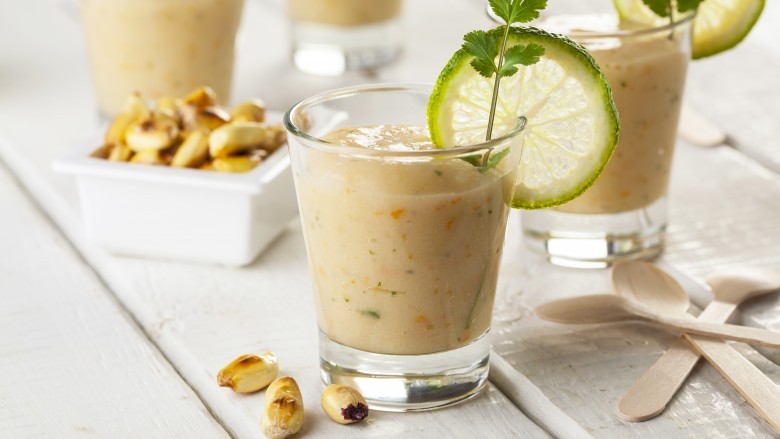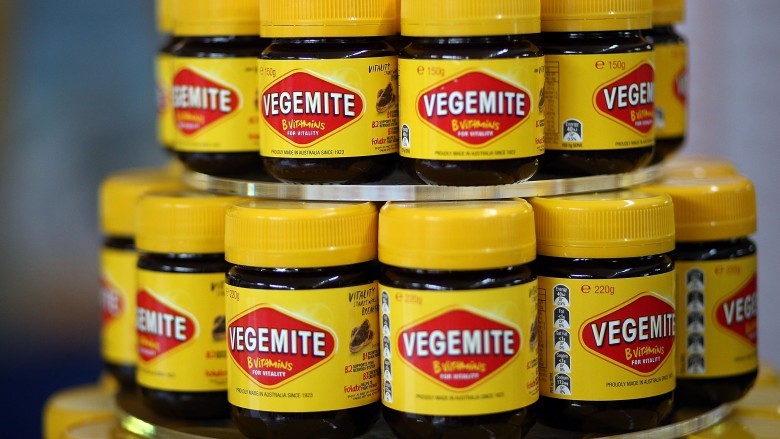Bizarre Things The Rest Of The World Eats For Breakfast
What do you have for breakfast? If you're in the Western world, you probably grab a bagel from the coffee shop, some cereal before you head out the door, or (if you're lucky enough to make time in the morning) have a sit-down breakfast of eggs and toast. Start traveling, though, and you might find yourself wandering down from your hotel room to breakfast and being surprised by what's on the menu. Let's look at some of the strangest things countries around the world are serving up for breakfast.
Ireland and the United Kingdom: black pudding
Order breakfast anywhere in Ireland or the U.K. and you're almost guaranteed to get something that looks like a cross between an American breakfast and an American dinner. There are eggs and toast, but there are also baked beans and an incredibly suspicious black pudding. Give it a taste and you'll notice that it tastes a bit like an old penny. That's because it's mostly blood (usually pig blood), that's been mixed with some oatmeal and fat. It's packed into a sausage tube, then either boiled, grilled, or fried before rolling onto your breakfast plate.
You might also have the pale version, white pudding. It's the same thing but without the blood. Sounds weird, sure, but the idea is an ancient one that gets a mention in Homer's Odyssey, and early recipes date back to Roman cookbooks from around the fourth century. The tradition of blood sausage started with the idea that none of the animal would go to waste and that every piece is used to feed families that historically haven't had much. It's a tradition that continues in some places today.
The Netherlands: sprinkles and toast
If you've ever felt guilty about having dessert for breakfast, you can rest easy knowing that you're in good company. The Dutch do it all the time, and it's amazing. The official term for the sprinkles that the Dutch decorate their morning toast with is hagelslag, and they look like the chocolate sprinkles Americans are more likely to put on their ice cream. There are also fruity and vanilla flavors ... all for breakfast.
You can't get much better than dessert for breakfast, right? That's why it's surprising this hasn't gone more mainstream, although it has spread to some places — like Australia, where it's called fairy bread. The proper way to eat sprinkles and toast is to cover your bread of choice with butter, and then cover the butter with sprinkles.
It's not as bad for you as you might think, either. The Dutch industry is regulated, and most high-quality chocolate sprinkles contain nothing besides cocoa and cocoa butter, which is certainly better than most of the sugar-laden cereals marketed toward American kids. If you want to add a little European flair to your breakfast table, you can do it with sprinkles, but check the label on your sprinkles and make sure you're OK with whatever's there.
Jamaica: ackee and saltfish
It's Jamaica's national dish, and it's not all that weird at a glance. Ackee is the national fruit of Jamaica, and ackee trees were originally imported from East Africa at some point before the mid-18th century. It's one of the country's biggest exports, so while serving up a breakfast of fruit and fish is odd, it's not the strangest thing you've ever heard of.
The bizarre part isn't even really the fish, but the fruit. The ackee is a strange-looking fruit, and every so often news releases circulate that remind people not to eat an ackee before the sections of the fruit have separated naturally. This signals it's now ripe and it isn't going to kill you anymore. In 2011, Jamaica's Ministry of Health released an alert saying that at least 35 people had been poisoned by improperly picked and prepared ackee in a recent six-week period. (It also specified that this was mostly ackee that had been prepared by home cooks, not the commercial product you get in restaurants or in the can.) Unripe — and improperly prepared — ackee contain high levels of a toxin called hypoglycin, which can cause severe vomiting, pain, cramps, sweating, and diarrhea. Even the water that's used to boil the ackee should be disposed of, as that's potentially toxic, too.
Mexico: menudo
Menudo has been a traditional Mexican breakfast for a long time, and beginning in the 1930s it started making its way north of the border. As Mexican workers moved north and settled in cities across California and the Southwest, they brought with them a long-standing breakfast tradition that was good for one specific thing: getting rid of that hangover.
There are many ways to prepare the soup, but they all involve something that almost never gets eaten otherwise, much less for breakfast. It's tripe, essentially cow's stomach. Some other traditional ingredients include throwing the whole cow's head into the pot, along with the feet, some spices, and chili peppers. Just why it's considered a hangover cure is uncertain, but the actual ingredients comes from the same idea that black pudding originated from. When you don't have much, you want to get the most out of what you do have and you use every part of the animal. In case you're wondering about the texture of tripe, it's been described as oozing, rubbery, and gelatinous. Sound like it's going to help your hangover?
Japan: fish, miso soup, and tofu
For the Western world, fish is traditionally reserved for dinner — and occasionally lunch, if you head to McDonald's for a fish sandwich. You might not think of fish for any other meal, but in Japan, grilled fish and miso soup is a traditional layout for the breakfast table.
The meal makes sense, as it's designed to pack a nutritional punch that keeps you going. The fish is usually salmon, high in protein, vitamins, minerals, and omega-3 fatty acids. Miso soup is made with a base of soy beans with vegetables, rice malt or barley malt, and stock, and there are usually some side dishes, like mixed Japanese pickles (made from cucumber and cabbage), and a small omelet. It sounds like a lot — and it is — but it'll set you up for the entire day!
Colombia: chocolate santafereno, caldo de costilla, and changua
Travel across Colombia and you'll find that like many other countries, there's a whole array of things you can order for your breakfast. Also like a lot of countries, some of them are pretty weird.
If you've been out drinking the night before and you're feeling a little off, caldo de costilla is touted as a Colombian cure-all. Mostly found in the cooler, interior areas of the country, it's a hot broth made from potatoes, onions, cilantro, and beef ribs. There's also changua, another love-or-hate sort of thing. It's a soup made from boiled milk, water, and scallions, with whole eggs dropped into the broth to cook.
If that sounds good, how about having it alongside a cup of chocolate santafereno? It's a hot drink that's served throughout the day, but many people choose to have it as part of their breakfast. It's essentially hot chocolate with a side of cheese that you're supposed to drop into your drink before you enjoy it. You were all in until the cheese, weren't you?
Ghana: waakye
Served for either lunch or breakfast, you can't get much more traditional than Ghana's waakye. Originating in the northern part of the country, it's since spread throughout the nation as a healthy meal and a symbol of their national identity. You can get it in Benin, Nigeria, and Togo, too, but it'll be slightly different.
Usually bought on the street, waakye has some simple, basic ingredients that make it an incredibly tasty — and nutritious — way to start the day. It's simply rice, beans (usually red) or black-eyed peas, a few sorghum leaves, salt, and water. That's it! It can be served on its own, usually with a spicy pepper sauce, or for a heartier meal, it's dished up alongside fish, chicken, beef, or vegetable stew. It sounds heavy and hearty for breakfast, but it'll keep you going well into the afternoon.
Hong Kong and China: congee with century egg
Congee is a pretty standard type of porridge, and it's a light meal that's a common choice at breakfast. It's not the rice porridge that makes this one a bit of a shock to Western eyes, though, it's what comes with it: a century egg.
No one's quite sure when the century egg was first made, but the name is a little deceiving. It's not actually a century old — it just looks and smells like it is. It's in grocery stores and on restaurant menus, and it's a favorite when it comes to breakfast even though some natives admit that it's an acquired taste that even those who grew up with it have to spend some time acquiring. That's not entirely surprising, especially given its other name: the horse urine egg.
Yum! Fans of the century egg say that if you can get past the strange color and bad smell that it's a pretty shockingly delicious delicacy with a velvety texture. There are a few different ways to make it, but a common one includes soaking the eggs in a mixture of black tea, salt, lime, and wood ash, for anywhere from several weeks to five months. Originally, the eggs were duck eggs, but they're now made from chicken and quail eggs, too.
Kenya: cow's blood
Starting the day with a hot, fresh cup of blood straight from the throat of a newly slaughtered cow isn't typical for the Maasai people of Kenya. It's reserved for kicking off the day when there's a special occasion, like a wedding. As a general rule, the Maasai harvest their animals rather than kill them, holding onto a creation myth that says they were created to be guardians of God's animals. So only special occasions warrant the slaughter of an animal that will feed the people that day. Other times, blood will be harvested like milk, in a ceremony where the cow's artery is cut and drained, without taking enough blood to actually kill the animal. A mix of blood and milk is used as a ceremonial drink, and it's often given to those who are sick, too.
Peru: leche de tigre
Visit any of Peru's seafood restaurants, and you might start with something called leche de tigre. It's basically a glass full of the liquid that runs from ceviche. It's made from fish juice, lime, onion, salt, pepper, and not a small amount of hot pepper. Most places throw in a few pieces of fish, too, and it's so popular you can find it in restaurants across the country.
It's become something of a first-thing-in-the-morning beverage because of a belief in its rejuvenating qualities, and that's what reportedly makes it the perfect hangover cure. If you happen to overdo it out on the town in Peru, pick up this fishy, fruity juice drink for breakfast and you'll (supposedly) be good to go. It's thought that the calcium and phosphorus in the drink is what does the trick, and that's why it's also called levanta muertos ("raise the dead").
Australia: Vegemite
Some things are quintessentially Australian, like kangaroos, drop bears, and other animals that are trying to kill you. There's Vegemite, too, a breakfast favorite from Down Under that the rest of the world isn't quite sure about yet.
It was originally made as a substitute for the hugely popular Marmite, at a time when supplies from Europe to Australia were halted by the conflicts leading up to and during World War I. Australian scientists knew that Marmite was made from leftover brewing yeast, so they concocted their own version and named it Vegemite. It wasn't a hit. It didn't become popular until it was branded as a health food in the 1930s, and during World War II it was a symbol of Australian pride. Today, it's a staple of Australian breakfasts whether you're putting it on toast or making Vegemite breakfast tarts.
If you're curious what Vegemite tastes like, you might try typing it into Google. If you type in "Vegemite tastes like" Google attempts to finish your search with "soy sauce," "beer," "bovril," and "sadness," among others. There you have it.
